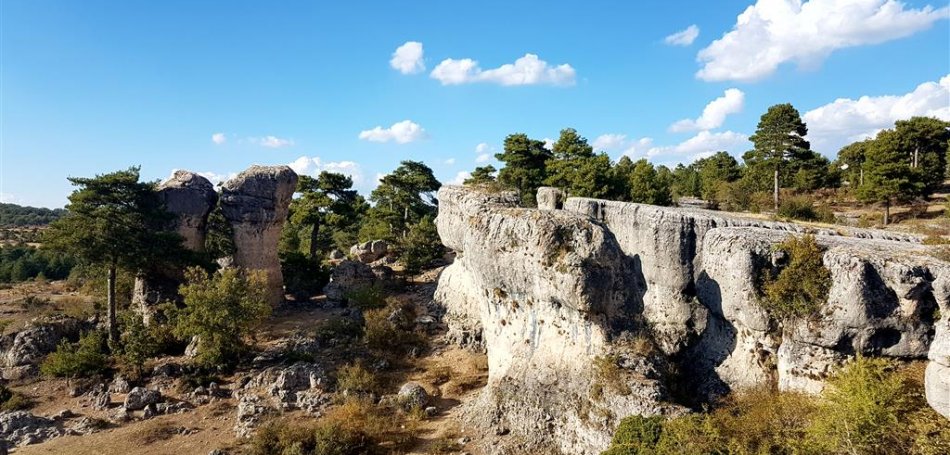
- publicado 22.10.2021
- por Cuenqueando
The Alleys of Las Majadas
In the Serranía de Cuenca there is a little-known area of nature, but whose
natural and landscape values we are sure that they will not leave you indifferent. This space is Los Callejones de Las Majadas. Today from Cuenqueando we invite you to get to know it a little better.
The visit to Los Callejones de Las Majadas will allow us to discover a peculiar park
geological located in the heart of the Serranía de Cuenca Natural Park. The Alleys are a large calcareous lapiaz caused by the erosive effect of water on this type of rock. This entire landscape is the remains of what was once a large calcareous massif accumulated over millions of years at the bottom of the Tethys Sea in the Mesozoic period, at the time of the dinosaurs. After the outcrop of the limestone massif and with the passage of time, deep gorges and gigantic witness formations were formed. In these rocks, using our imagination, we can observe different figures that may remind us of the creatures of the time in which they were formed.
The whimsical shapes of Los Callejones have given rise to a multitude of microenvironments where we will find great plant biodiversity. The rock flora stands out (plants adapted to life on the surface of the rocks), whose species find perfect places to live in the different corners of Los Callejones de Las Majadas. A
A series of well-indicated trails guide us through the intricate labyrinth that forms Los Allejones. On these trails, we will also find signs that make up a botanical guide to the most representative species along the route. And if after doing this route you get hungry, we recommend The best restaurants in Cuenca mountain Range.
Very close to Los Callejones and as a perfect complement to your visit, is the Mirador del Tío Cogote, which is hanging over the Molinillo ravine, allowing us impressive views of the Jucar River Canyon. From here we can also see
the nearby vultures and the flight of griffon vultures, Egyptian vultures and other birds that live on the rock walls of this part of the Cuenca mountain Range.
 ES
ES EN
EN PT
PT